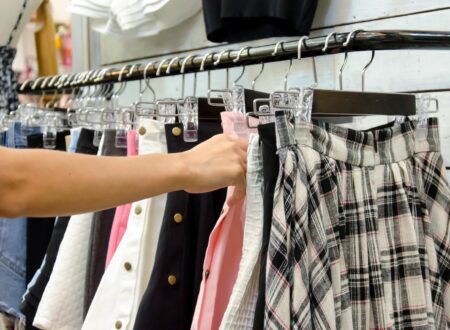Fashion is often seen as a reflection of self-expression, creativity, and style. But what happens when the industry that fuels our wardrobe choices comes at such a high cost to the planet? Enter sustainable fashion—a movement that champions eco-friendly practices without compromising on aesthetics. With more people becoming aware of their purchasing power, the desire for stylish yet ethical clothing is on the rise.
Imagine stepping out in chic outfits while knowing you’re making a positive impact. Sounds appealing, right? Building an eco-friendly wardrobe may seem challenging, but it’s easier than you think. Whether you’re a seasoned eco-warrior or just starting your journey into sustainability, there are countless ways to elevate your style sustainably. Let’s explore how you can curate a fashionable closet that’s kind to both you and Mother Earth.
Understanding Sustainable Fashion
Sustainable fashion is about creating clothing that has a positive impact on the environment and society. It encompasses practices that reduce waste, conserve resources, and promote fair labor conditions.
At its core, sustainable fashion seeks to challenge the fast-paced nature of the industry. It encourages consumers to think beyond seasonal trends and make more thoughtful choices. This means opting for high-quality pieces that last longer rather than disposable items designed for short-term wear.
Materials play a crucial role in sustainability. Organic cotton, recycled fabrics, and innovative textiles made from plant-based sources are gaining popularity as alternatives to conventional materials laden with harmful chemicals.
Moreover, this movement supports local artisans and ethical brands committed to transparency in their manufacturing processes. By choosing sustainable options, you not only elevate your wardrobe but also contribute to a larger change within an often exploitative industry.
The Environmental Impact of Fast Fashion
Fast fashion has revolutionized the clothing industry, but at a significant cost to our planet. The rapid production cycles encourage mass consumption and throwaway culture. As trends shift quickly, garments often end up discarded after just a few wears.
Water usage is staggering in fast fashion. It takes about 2,700 liters of water to produce one cotton shirt—enough for one person’s drinking needs for over two years. This strains local water supplies and harms ecosystems.
Moreover, synthetic fabrics like polyester shed microplastics into our oceans with every wash. These tiny particles can lead to severe consequences for marine life and eventually find their way onto our plates through the food chain.
The waste generated by unsold items is equally alarming. Landfills overflow with clothes that could have otherwise been recycled or repurposed. Each piece tells a story of resources wasted and communities affected by unethical labor practices linked to this industry trend.
Steps to Building an Eco-Friendly Wardrobe
Start by auditing your current wardrobe. Identify items you wear frequently and those that just hang there. This helps clarify what truly fits your lifestyle.
Next, embrace quality over quantity. Invest in timeless pieces made from sustainable materials like organic cotton or Tencel. These fabrics are not only better for the planet but often more durable too.
Consider second-hand shopping. Thrift stores and online resale platforms offer unique finds without the environmental toll of new production.
Set a budget for future purchases focused on ethical brands known for their transparency. Research companies that prioritize fair labor practices and eco-friendly processes.
Experiment with upcycling old garments into something fresh and trendy. Transforming an outdated piece can breathe new life into your style while reducing waste in landfills.
Supporting Ethical and Transparent Brands
Choosing to support ethical and transparent brands is a powerful way to make a statement with your wardrobe. These companies prioritize fair labor practices, environmentally friendly production methods, and transparency in their supply chains.
When shopping, look for certifications like Fair Trade or B Corp. These labels assure you that the brand meets rigorous social and environmental standards.
Research is crucial. Take time to explore a brand’s mission and values on their website. Many ethical brands openly share information about where they source materials and how workers are treated.
Social media can also be an ally in this journey. Follow sustainable fashion influencers who highlight ethical brands worth exploring.
Remember, every purchase sends a message. By choosing consciously made clothing, you contribute to positive change within the industry while still expressing your unique style through mindful choices.
How to Incorporate Sustainable Fashion into Your Personal Style
Embracing sustainable fashion doesn’t mean sacrificing your unique style. Start by assessing your wardrobe. Identify pieces that you love and wear often, as these become the foundation of a curated collection.
Mix vintage finds with modern sustainable brands to create striking outfits. Thrift shops are treasure troves for one-of-a-kind items that tell a story. Each piece brings character while being kind to the planet.
Experiment with layering and accessorizing to breathe new life into existing clothing. A simple belt or statement jewelry can transform any outfit from ordinary to extraordinary.
Don’t shy away from bold colors or patterns, especially in eco-friendly materials like organic cotton or Tencel. These fabrics not only look good but also feel great against your skin.
Remember that personal style evolves over time. Stay open-minded and flexible as you incorporate more sustainable choices into your everyday attire, reflecting both innovation and authenticity in every ensemble.
Overcoming Challenges and Sticking to a Sustainable Wardrobe
Adopting a sustainable wardrobe often comes with hurdles. A common challenge is the temptation of fast fashion trends. They’re everywhere, making it easy to slip back into old habits.
It helps to focus on long-term benefits rather than fleeting styles. Remind yourself why you made this commitment in the first place.
Another issue can be budget constraints. Sustainable items sometimes carry a higher price tag upfront. However, investing in quality pieces pays off over time through durability and versatility.
Navigating social situations can also be tricky when friends are shopping at conventional retailers. Sharing your passion for eco-friendly choices can inspire others and create supportive environments.
Don’t stress about perfection. It’s natural to make occasional compromises. Embrace small wins that contribute to your journey towards sustainability without losing sight of your personal style goals.
The Long-Term Benefits of Sustainable Fashion
Sustainable fashion offers numerous long-term benefits that extend beyond your wardrobe. By investing in eco-friendly clothing, you support practices that prioritize the planet. This can lead to a significant reduction in pollution and waste.
Choosing quality over quantity means your clothes last longer. This not only saves money but also reduces the constant cycle of buying and discarding fast fashion items.
Moreover, embracing sustainable brands often fosters a sense of community. You connect with like-minded individuals who value ethical choices and share tips on maintaining an eco-conscious lifestyle.
As awareness grows around sustainability, consumer demand shapes industry standards. Supporting these initiatives encourages more brands to adopt responsible practices—creating a ripple effect for future generations.
Conclusion
Sustainable fashion is not just a trend; it’s a movement toward a more responsible and conscious way of dressing. By understanding the impact of fast fashion, we can appreciate the importance of building an eco-friendly wardrobe. Each choice you make contributes to a larger change.
Supporting ethical brands helps promote transparency in the industry. It’s about choosing quality over quantity and supporting those who prioritize sustainable practices. You can look stylish while making choices that benefit our planet.
Incorporating these principles into your personal style may seem challenging at first, but with time, it becomes second nature. The rewards are plenty—both for yourself and for the environment you inhabit.
Embracing sustainable fashion leads to long-term benefits such as reduced waste, better resource management, and a healthier world for future generations. As you navigate this journey, remember that every small step counts in making a big difference. Your wardrobe can be both chic and kind to our Earth.





